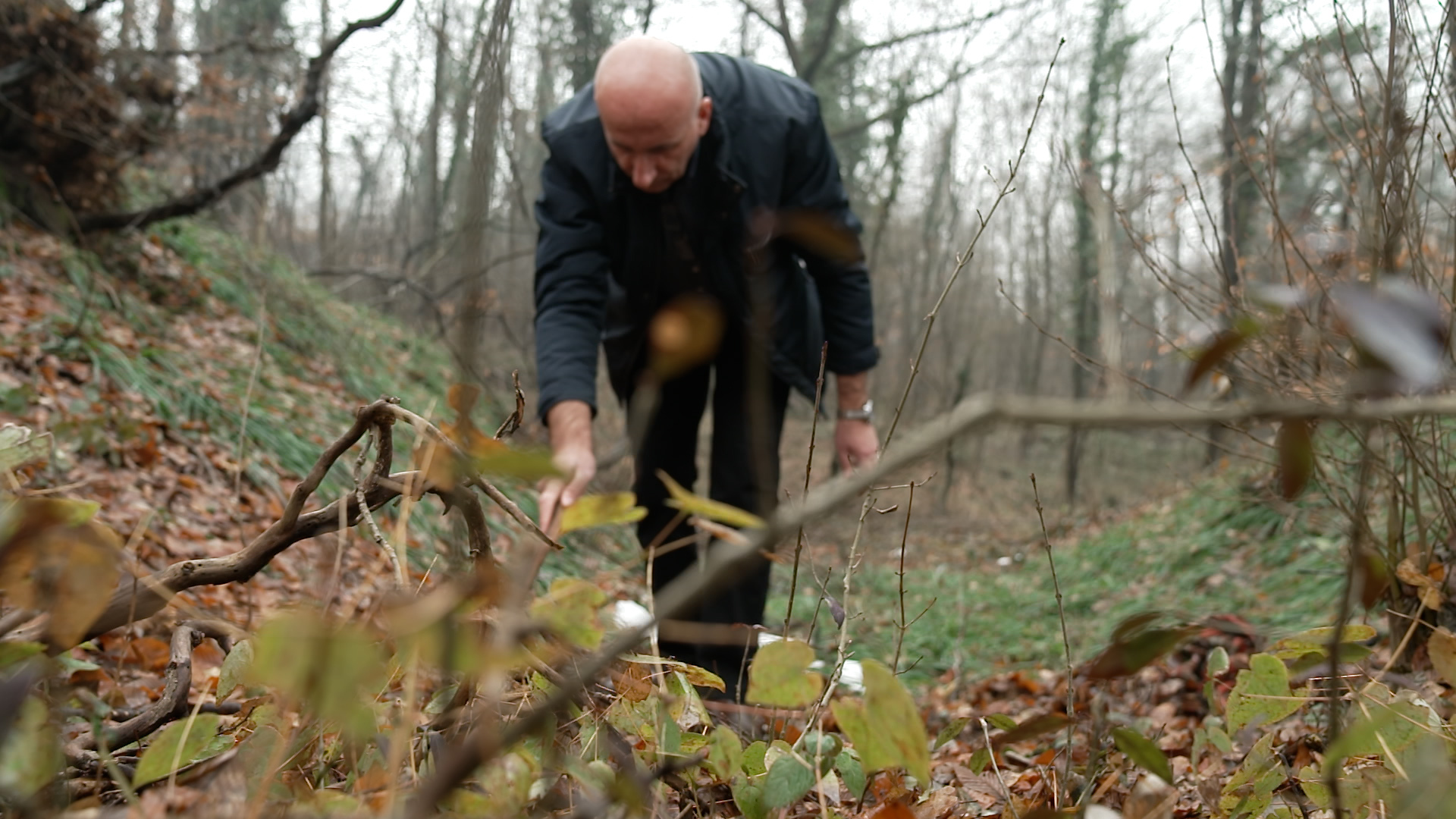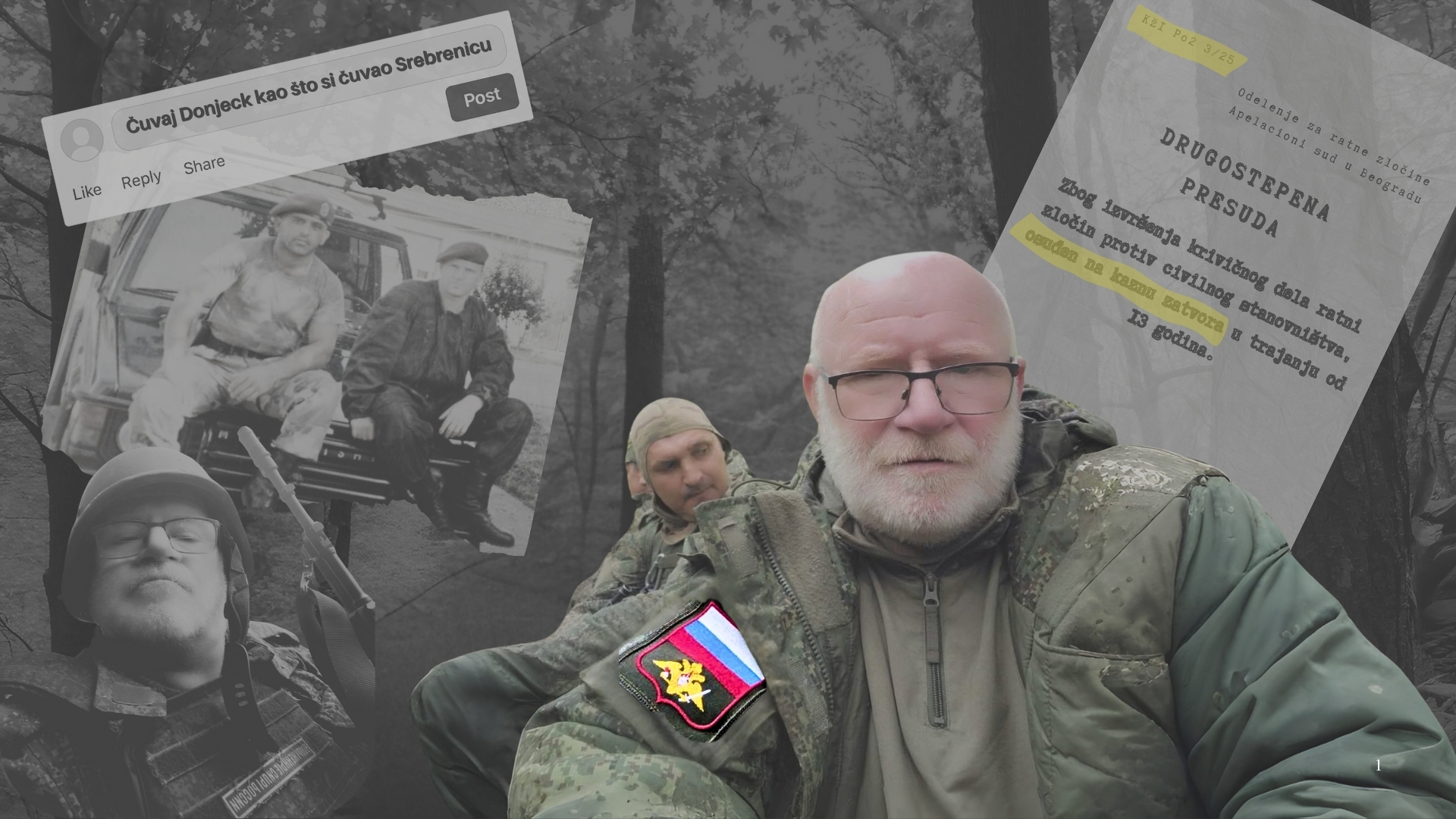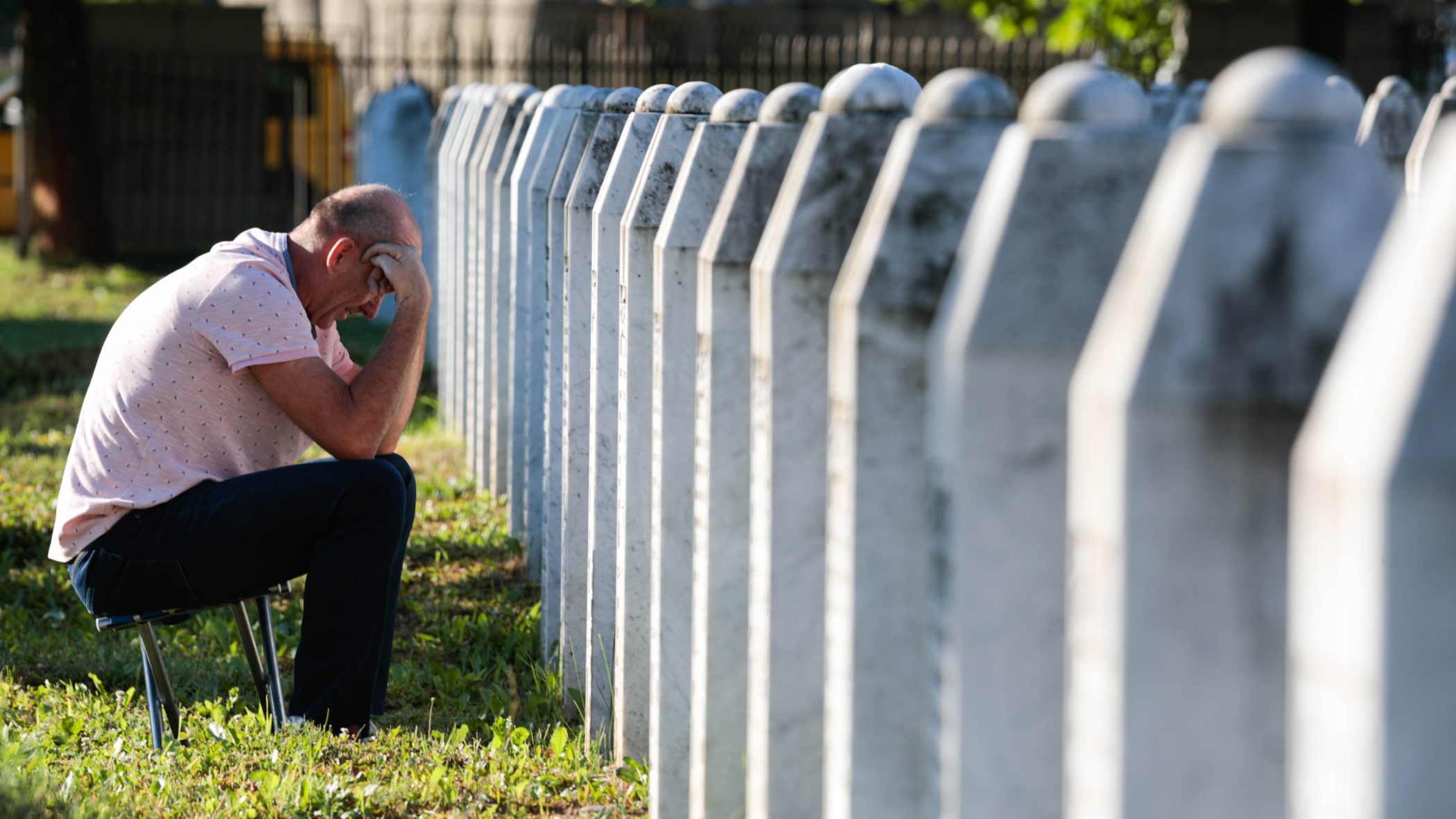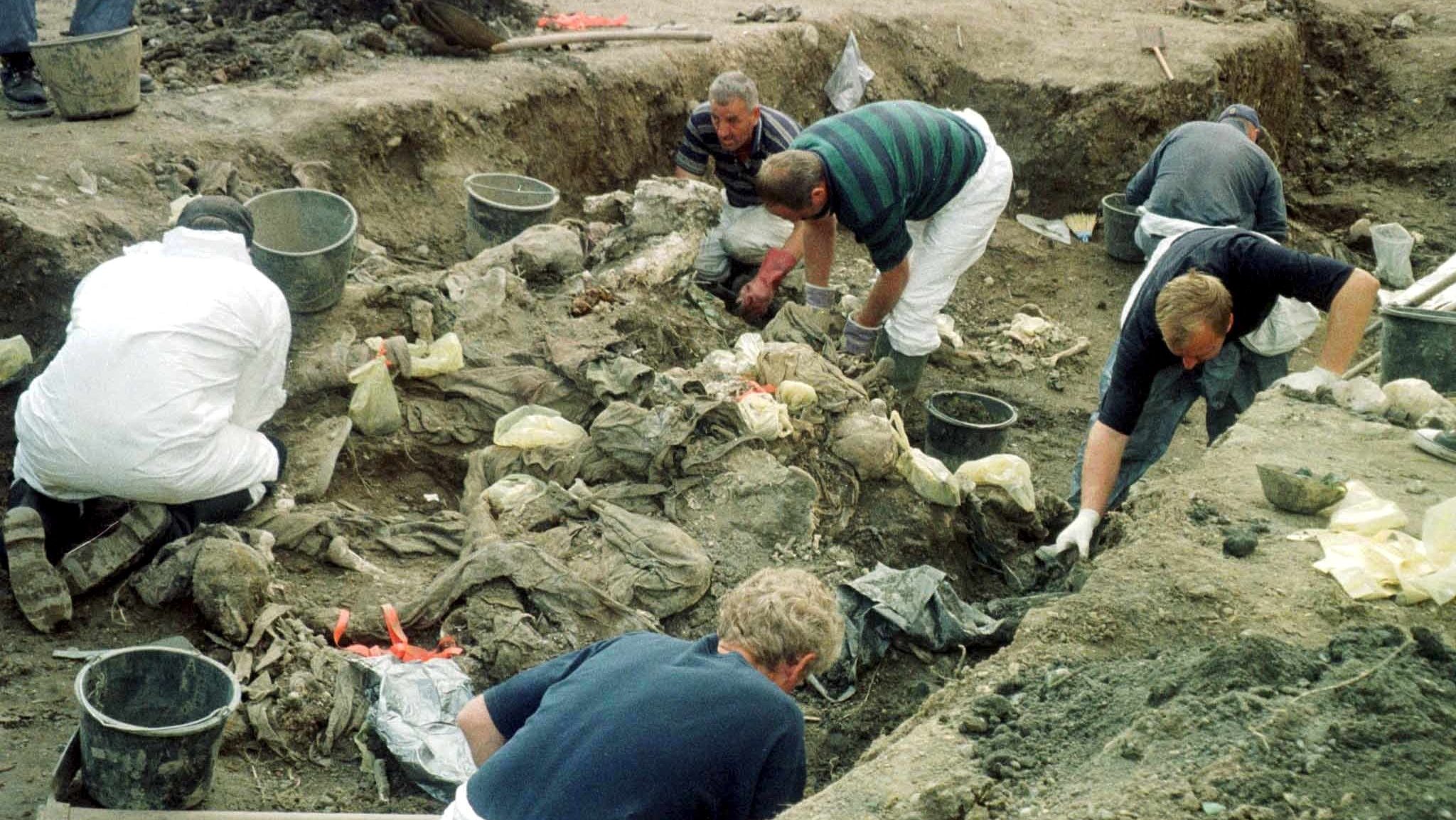This post is also available in: Bosnian
Sadik Selimović will never forget the day a mass grave in Suha near Bratunac was opened up in 2005. Selimović, an investigator from the Missing Persons Institute of Bosnia and Herzegovina, was there when they found a black bag, inside which was a dead mother hugging two dead children.
In a second bag, they found Zakira Begić, who was pregnant when she was killed.
“That grave left a lasting imprint on all of us. It can’t be unseen,” says Selimović.
Over time, the work becomes routine, he says.
“I’m happy when I find a body. It’s an ugly thing to say, but it’s true, because I know I’m resolving something,” he explains.
There have been five exhumations in the village of Suha, near Bratunac. The largest mass grave was discovered in May 2005, when the remains of 38 victims were exhumed; 35 of them were identified.
The youngest victim, Adina Hajdarević, was three months and 18 days old when she was killed. The oldest victim was Zulfa Alić, who was 86.
Over three decades in the job, Ismet Musić, an investigator from Tuzla, has witnessed the opening of numerous graves from which the remains of children have been exhumed. One such grave was in Glumina – the so-called Ramo’s Grave, from which the remains of 19 children were exhumed in 1998.
“It’s very difficult when you remove part of the soil and notice small bones that belong to children. Sometimes a baby, a few months old. Then you see the clothes, playsuits, their pacifiers, bottles… Then you see a mass grave. When you open up a mass grave, there is a mother lying there, holding a two-to-three-month-old baby in her arms,” says Musić.
Sanja Mulać, one of the few female investigators, has been searching for the remains of war crimes victims from the Herzegovina region for years. She says that aside from the physical and mental strain of the job, it also brings some satisfaction.
“There’s no going back once you start doing this. I thought I’d be able to move and work somewhere else, I had the opportunity, but I couldn’t leave this job. You get a certain satisfaction when you get a DNA result or a positive identification, because you know that you will resolve the fate of a missing person, and with it the pain of about 20 members of their family,” explains Mulać.
Mulać also worked at the Roman Well grave in Goranici, where the remains of soldiers killed in the 1993 Vranica massacre were found.
“When the grave was opened up, I recognised some items and knew it was them. At the identification at the Sutina City Cemetery morgue, a mother said: ‘Sanja, please, ask the doctor to let me kiss my son’s bones for the last time.’ And I broke into tears,” she recalls.
The remains of ten members of the Army of Bosnia and Herzegovina were found at the Roman Well site near Mostar, while the bodies of three others are still being searched for. The Hague Tribunal verdict in the trial of Jadranko Prlić et al. says that the Vranica residential complex in western Mostar was attacked by the Croatian Defence Council on May 9, 1993, and that civilians and soldiers surrendered the day after. The verdict notes that some of the soldiers who surrendered were detained at the Mechanical Engineering Faculty, where the Croatian Defence Council’s 3rd Military Police Battalion was stationed, and “where they were brutally beaten”.
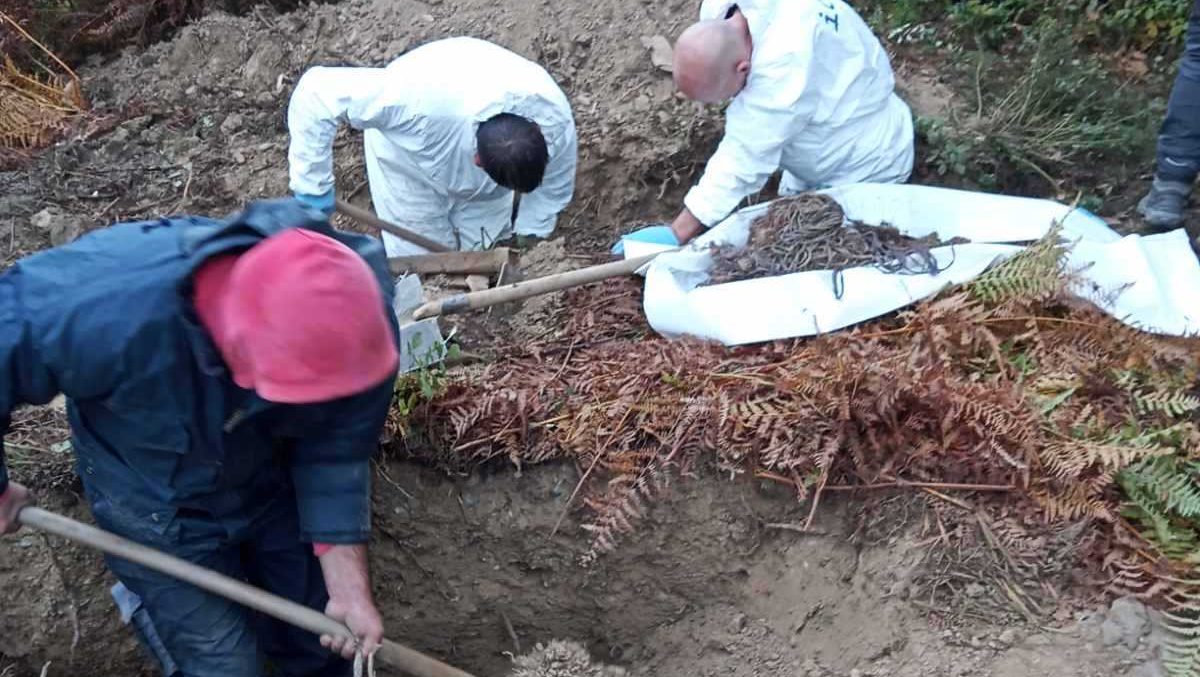
Exhumation of the remains of children in Bratunac. Photo: Sadik Selimović
For Mulać, the most difficult was to work on the exhumation of the Lipovača pit near Nevesinje. According to prior intelligence, it contained the remains of up to 150 civilians, 20 of whom were children.
“There we found fragments of bones of seven children aged two-and-a-half to 14. Fragments of the remains of the body of Saudin Aličić, born in 1985, were identified. Lipovača is located in the town of Nevesinje itself. On a hill called Šehovina. [The pit] is 60 metres deep. The bottom of the pit was mined when we arrived to work in 1999,” recalls Sanja.
The remains of the people who went missing in the settlements of Žulja and Vranjevići in June 1992, and whose bodies were found in the Lipovača pit, will be buried at a collective funeral in Mostar in June 2025.
Mulać says they are still searching for the bodies of 30 children in Herzegovina, 20 of whom went missing in Nevesinje. So far, in addition to Aličić, the remains of Mirza Duraković, Salih Alibašić, Mehmed Aličić and Muhiba Crnomerović have been exhumed in the area.
“In Prozor in 1998, we exhumed the boy Haris Pilav and his mother Šemsa. He was nine months old. We found them in a common grave. As they were being shot at, the mother hugged him so tightly that we exhumed her and the baby in her arms. These are terrible images to look at,” says Mulać. She wonders how could anyone shoot a baby and throw its body into a pit.
She says they are searching for another baby who was killed in Nevesinje and thrown into the Lipovača pit. The remains from this grave were moved to a secondary grave that was never located, she states.
“There used to be more information, but as the years went by, the most difficult cases still weren’t solved. Should any information about Lipovača emerge, it would mean that many people from Nevesinje would be held accountable for war crimes. Such information remains in the dark, no one wants to pass it on because they’re afraid. I have come into contact with people who tell me: ‘I can’t say anything, I’m afraid I won’t be alive tomorrow if I tell,’” says Mulać.
Some investigators have also conducted their own searches. For years, Sadik Selimović has been searching for missing members of his family in the forests and hills of Podrinje. During his searches, he found his father Bajro and three brothers – Hasan, Sabahudin and Hajrudin – who were killed in the Srebrenica genocide.
“Every Srebrenica grave, I thought it held one of my own. I found Hasan in Kamenica 10 [mass grave], he was relocated from Kozluk and Pilica, where my father Bajro was. The Hague Tribunal exhumed my father. I found Hajrudin above Kravica, on Kamenica Hill. [Missing persons investigator] Amor Mašović collected him. I found my youngest brother Sabahudin in Vlasenica and he was buried two years ago [at the Srebrenica Memorial Centre] in Potočari,” says Selimović, whose office is in Srebrenica.
His brother Sabahudin spent three months in the forest and managed to reach free territory. However, one evening, together with his friend Sabrija, he got separated from the convoy of fleeing people. They came across an Army of Bosnia and Herzegovina patrol, looking for them, but they did not respond to their calls.
“They were afraid because they had survived three ambushes on the way from Srebrenica. They later ran into a group of soldiers and were killed in a village near Vlasenica. That’s where we found his remains. When the exhumation was done, my colleague Ismet went, I couldn’t bear it. The DNA results came and I told the doctor to look at his teeth and the left arm that he once broke. The doctor saw it and confirmed that it was him,” Selimović recalls.
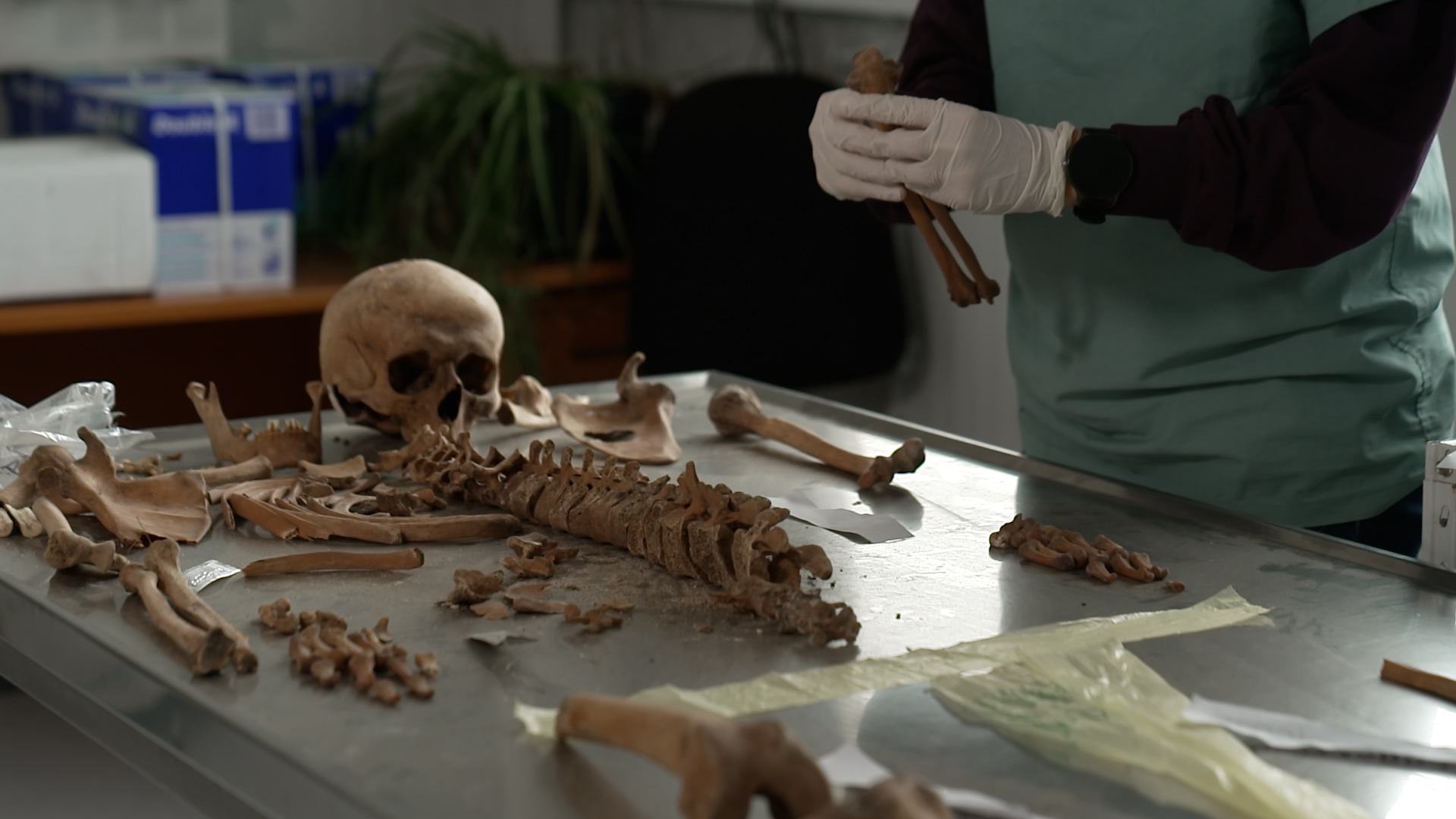
The remains in the ossuary. Photo: Detektor
He was wounded in Srebrenica in 1995 and transferred to the UN peacekeepers’ base in Potočari, from where he was taken to Tuzla. He was returned from Tišće near Vlasenica and transferred to hospital in Bratunac, from where Momir Nikolić, his class teacher, sent him to the Batković camp. Nikolić was sentenced to 20 years in prison by the International Criminal Tribunal for the Former Yugoslavia after a plea agreement.
According to the Missing Persons Institute’s Tuzla Regional Office, out of 279 missing minors from the Bratunac area, 247 have been identified, handed over to their families and buried, while 32 children are still missing. In Srebrenica, 22 children are still missing, while 176 children have been found, exhumed, identified and handed over to their families.
Unlike Selimović, Musić never found the remains of his father and brother, who were taken from their home on June 1, 1992, in a group called Bijeli Potok (White Stream) from Zvornik, along with 670 other people. They were first taken to a detention facility in the Vocational School Centre in Karakaj, where executions were carried out. From there, surviving prisoners were transported to other detention sites.
Musić’s father Mustafa and brother Mujo were taken to the Cultural Centre in Pilica, and have been missing ever since, like 243 others from the same group.
“When I started this job, every day when I’d get home, my mother would be waiting for me on the doorstep to ask: ‘Son, have you found any of your father and brother’s bones?’ I kept trying to explain, on the first day, the second day, the fifth, the tenth… but I couldn’t keep saying every day that I’d find one. Those were very difficult moments for me and my mother. Unfortunately, she suffered a heart attack from all the suffering and pain and passed away 15 years ago,” says Musić.
Proceedings are currently pending before the Court of Bosnia and Herzegovina against Vinko Radović, Dragomir Vasić and Petko Panić. According to the charges, in the period from May 30 to June 25, 1992, in the Zvornik Municipality, during a widespread and systematic attack by military, paramilitary and police forces of the so-called Serbian Republic of Bosnia and Herzegovina, and then of Republika Srpska, the forcible relocation of around 4,000 Muslim civilians from Đulići, Klisa and surrounding villages was prepared and executed. This included the unlawful detention of around 600 men, separating them from the women and children and killing them.
During the exhumation of the primary mass grave in Grbavci in the Zvornik area, from which 69 complete remains were exhumed, Musić thought he had found his father.
“While working on that grave, I noticed a body, and based on the clothes, I believed that this might be my father. I recognised the trousers and the jacket. My legs failed me. That instant, I sat down on the edge of the grave and could not move for hours. Then I called the forensic investigator to get to those remains and take out the thigh bones from the trousers to see if there were any damage to the thigh bones. Because when he was alive, my father was cut by a chainsaw on his thigh, so the bone was also nicked,” Musić said. But DNA analysis showed that this was not his father.
Selimović says that he often offers money in exchange for information about potential locations of mass or individual graves, but that this no longer produces results. Other institutions must also help in the search for the missing, he believes.
“I meet my schoolmates here, I offer money, I offer anything, but in vain. Politics and this situation are to blame for everything, as well as the indecisiveness of the State Prosecutor’s Office when they bring someone in; if someone knows where the location is, they should offer them a [case] settlement mechanism. Because time is taking its toll, and many witnesses and those who know things have died,” Selimović says.
The Tuzla Regional Office has so far found and identified more than 9,800 remains of missing persons and handed them over to their families.
“We are still searching for 2,500 people. We have to say that we’ve done a really big job. However, this means nothing to me, because families keep coming to me and asking: ‘Ismet, but where is my son, husband, father and brother?’ Just as I keep searching for my own,” says Musić.
*This analysis was produced with the assistance of the EU Support to Confidence Building in the Western Balkans project, funded by the European Union and implemented by the United Nations Development Programme (UNDP). The content of this article is the sole responsibility of BIRN and does not necessarily reflect the views of the European Union or UNDP.
